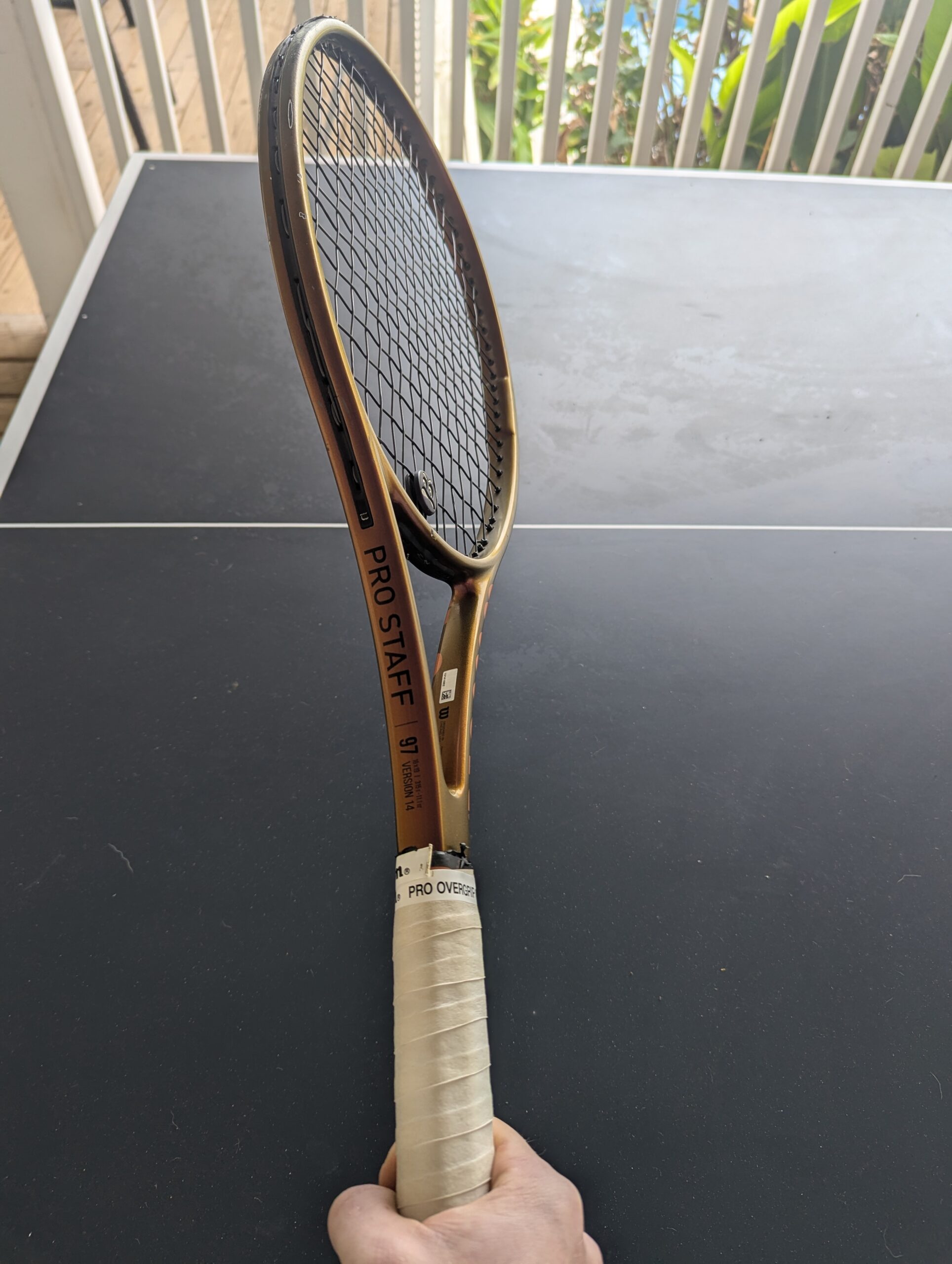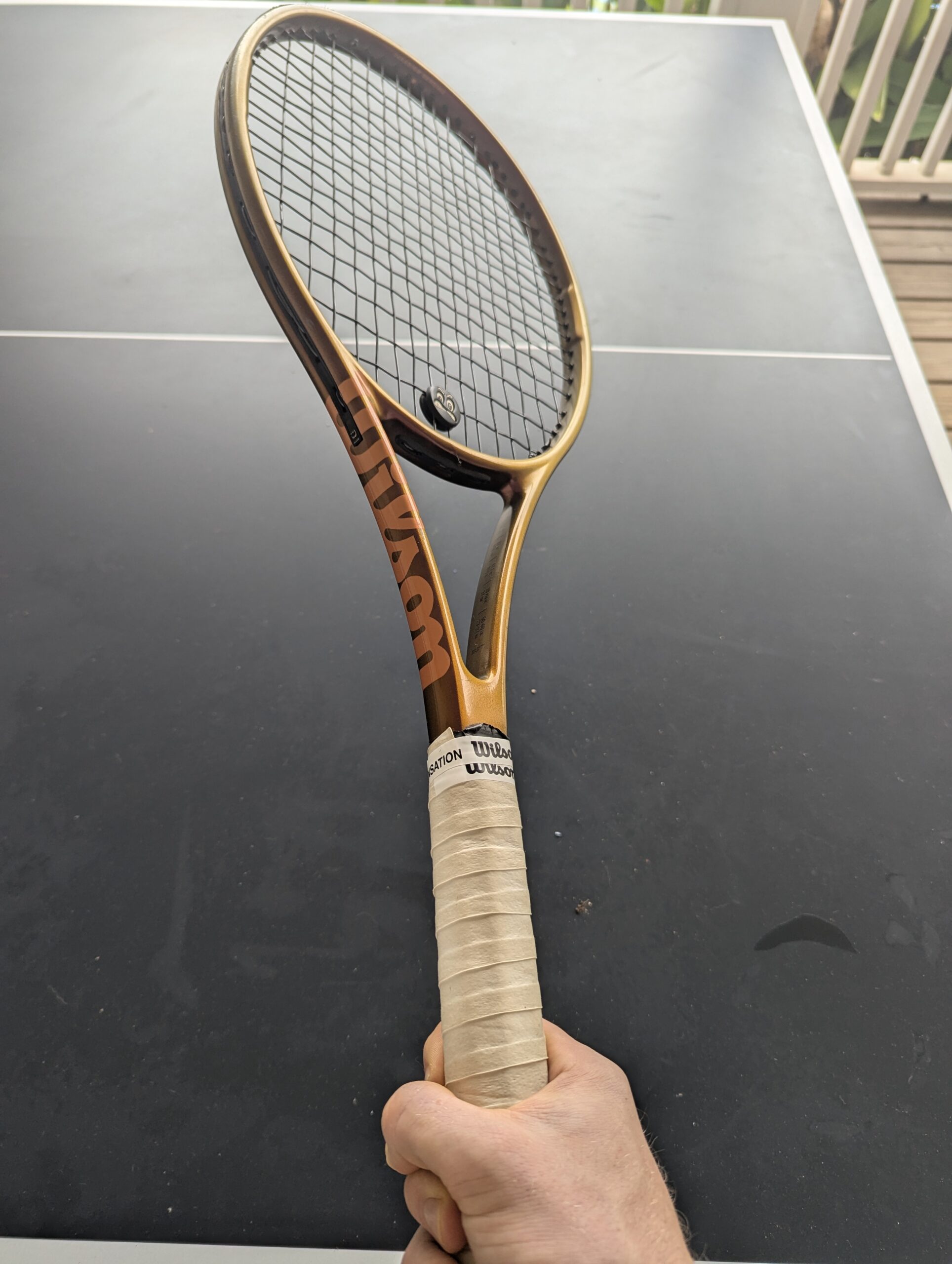Getting the right grip on your tennis racket is one of the most important steps to becoming a better player. Whether you’re picking up a racket for the first time or looking to improve your skills, learning the different grips can have a big impact on how you play. There’s a ton of information out there about which grip to use, and honestly, it can be pretty confusing. In this guide, we’ll break down the key grips and show you exactly how to use them in a simple, easy-to-follow way.
Why Tennis Grips Matter
In all my years of coaching and playing, one thing has become abundantly clear, if you are hitting the ball with the wrong grip then you are not going to get the results you want. It would be like, for example, eating a soup with a fork, whilst you could do it, it would not be very effective at all! Some of the thing an incorrect grip will lead to are:
- Inconsistent shots
- Reduced power
- Increased risk of tennis elbow
- Limited shot variety
- Poor technique development
Essential Tennis Grip Types
1. Continental Grip (The Handshake Grip)
Best for: Serves, volleys, overheads, and slice shots
The Continental grip is your foundation and should be the first grip you master.
How to Execute:
- Hold your racket perpendicular to the ground
- Place your hand on the racket so that the v of your hand (between thumb and index finger) are on the middle of the racket.
- Wrap your fingers around naturally, like shaking hands
- The racket should be in a completely vertical position.
Pro Tip: Practice your Continental grip by bouncing the ball on your racket face while maintaining this grip position.
See image below for correct continental grip.

2. Eastern Forehand Grip
Best for: Flat forehands and beginners learning basic strokes.
How to Execute:
- Start with the Continental grip
- Use your non-dominant hand to turn the racket slightly to the left (for a right-handed player) or to the right (left-handed player)
- Hold the racket near the bottom of the grip at this new position.
- The racket should now be slightly pointing to the ground – this is a great forehand grip to start with.

3. Semi-Western Forehand Grip
Best for: Generating topspin and handling higher balls, great for intermediate to advanced players.
How to Execute:
- Start with the Eastern Forehand grip.
- Use your non-dominant hand to rotate the racket slightly farther to the left (for a right-handed player) or to the right (for a left-handed player).
- Hold the racket near the bottom of the grip in this new position.
- The racket face should now naturally tilt slightly downward when you hold it in front of you – this is ideal for brushing up the ball to generate topspin.
See the image below for the correct semi-western grip.

4. Eastern Backhand Grip
Best for: Beginners learning the fundamentals for both the single and double handed backhand.
How to Execute:
- Start with the Continental grip
- Use your non-dominant hand to turn the racket slightly to the right (for a right-handed player) or to the left (left-handed player)
- Hold the racket near the bottom of the grip at this new position.
- For a two handed backhand: Grab the racket with your non-dominant hand just above your dominant hand in a way that feels natural.
- The racket should now be slightly pointing to the ground – this is a great backhand grip to start with.
See the image below for the correct eastern backhand grip.

What is the best grip to use?
While there are many answers to this question, and everyone has their own opinion, the truth is that there is no “one correct grip.” There are grips that are more conventional for certain shots — for example, the continental grip for the serve, and the eastern grip for beginners’ forehands. However, as you play and improve, and as you learn how to hit the ball more effectively, I believe you should experiment with your grip.
Everyone strikes the ball in a slightly different way, and everyone has their own tendencies. If you want to add more spin or power to your shots, try switching up your grip and see what feels right for you.
I’ve been playing tennis for over 17 years, and to this day, I still adjust my grip when I feel something’s missing. Don’t be afraid to experiment! Find what works for you and have fun with the process!
Conclusion
Mastering tennis grips takes time and practice, but it’s essential for developing proper technique. Start with the Continental grip as your foundation, then gradually incorporate other grips as you become comfortable. Remember to stay relaxed and practice grip changes regularly during your training sessions.
🎾 Support Tennis Simplified:
If you enjoy our content, please consider supporting us by using our affiliate links:
- 🛒 Try Amazon Prime free for 30 days for fast delivery on tennis gear.
- 🏷️ Save at Tennis Point with code ACPNL_WD74561.
Thank you for your support—it helps us keep creating great tennis content!

